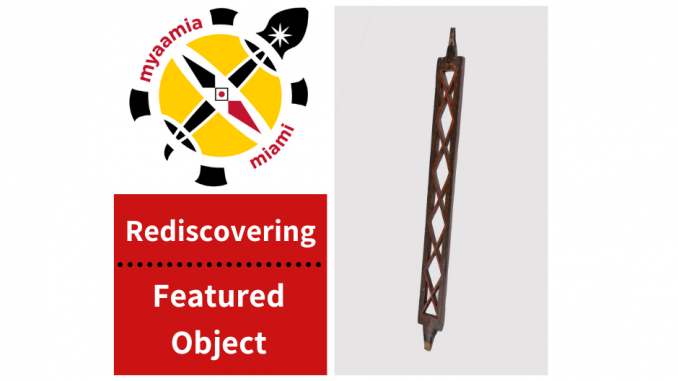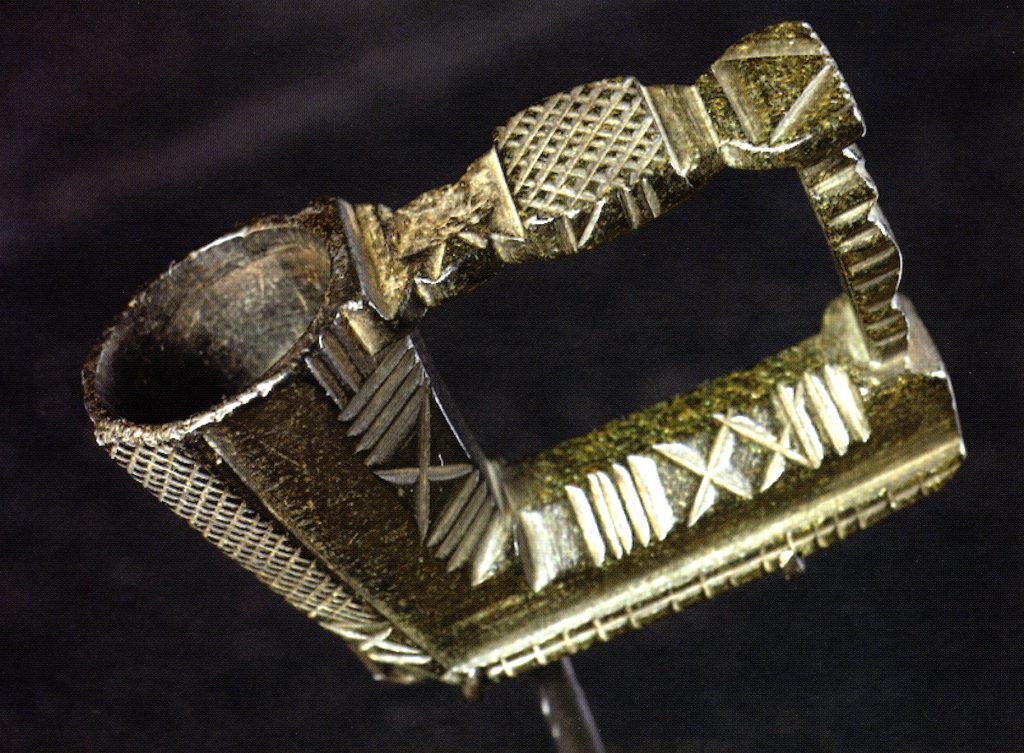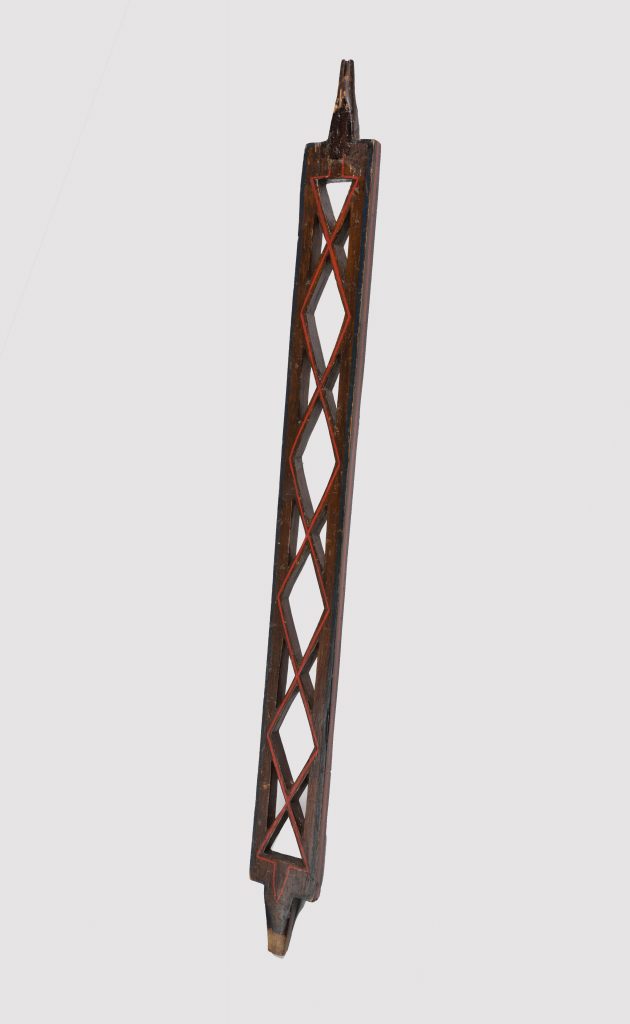

ahpwaakana ‘Pipe bowl’, 19th century
Soapstone
National Museum of the American Indian, Smithsonian Institution, 219179

ahpwaakanti ‘Pipe stem’, 19th Century
Wood and pigment
Cranbrook Institute of Science, Bloomfield Hills, Michigan, 2194
This pipe bowl and stem were produced by unnamed Myaamia artists in the early 1800s. They both demonstrate our ancestors’ use of angular geometric forms in a wide array of materials. The pipe also demonstrates how the waawaahsinaakwahki, the ‘shimmering’ effect, seen so clearly in ribbonwork, could be produced with stone. If you walk slowly around the case and watch the incised grooves, you will likely notice the light dancing off the surface of the pipe. The pipe stem was likely made to be affixed to a much larger pipe for public gatherings that may have included treaty negotiations and ceremonies. Much like ribbonwork, the pipe stem is painted black foundation with red used as an accent color, with the diamonds and hourglass shapes at the center of the stem allowing light to pass through when in use. Given its size, the pipe bowl was likely a personal pipe used with a smaller reed or wooden stem. The pipe bowl and pipe stem were acquired from non-Myaamia families in Indiana and Ohio. It is not known how these objects came into their possession.
